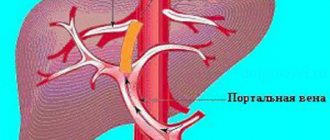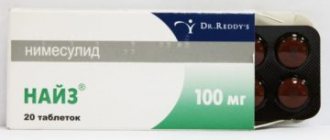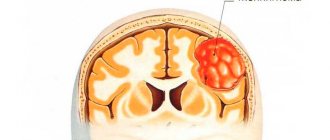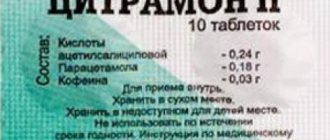The average weight of the human brain is two percent of body weight. But at the same time, it consumes a fifth of the oxygen consumed by the entire body. Such a high consumption of oxygen and glucose is necessary for the normal functioning of the brain (BM) as the main regulator of life.
Oxygen and other nutrients enter the brain tissue through the blood. The deterioration of its blood supply immediately affects the functioning of all other organs and physiological systems.
Unfortunately, the human brain is very vulnerable in this regard. Its blood supply is disrupted by hypertension and hypotension, diseases of the cardiovascular system, lung diseases, osteochondrosis, etc. Various medications are used to improve blood circulation in the brain, including Vinpocetine.
Vinpocetine packaging
"Vinpocetine" (instructions for use): at what pressure and for what diseases is it used?
The use of this drug is practiced for various cerebrovascular pathologies.
- The basis for prescribing Vinpocetine may be a stroke. It occurs when the blood supply to certain parts of the brain is disrupted as a result of blockage of blood vessels (ischemic type of stroke) or their rupture (hemorrhagic type).
- The next indication is vertebrobasilar insufficiency. It is diagnosed when there is a weakening of blood flow in the vertebral or basilar arteries.
Causes of dementia
- It is recommended to use the medication for vascular dementia. It is an acquired dementia resulting from damage to the cerebral vasculature.
- The drug is also used for cerebral atherosclerosis. It is diagnosed when atherosclerotic deposits form in the vessels of the brain.
- The list of indications includes hypertensive and post-traumatic encephalopathy. The first occurs due to high blood pressure, the second - as a result of injuries with subsequent degenerative changes in the brain.
Vinpocetine is also used in the treatment of vascular pathologies of the eye, senile hearing loss, Meniere's disease (a disease of the inner ear with an increase in the level of labyrinthine fluid and an increase in intralabyrinthine pressure), and tinnitus.
Many patients are interested in whether Vinpocetine lowers blood pressure or not? Putting the question in the context of “does the drug increase or decrease blood pressure” is not entirely correct. The medicine is not intended to directly affect blood pressure. However, Vinpocetine can reduce blood pressure. The hypotensive result of treatment is considered one of the possible side effects. But pressure increases and fluctuations cannot be ruled out.
Does coffee lower or raise blood pressure?
Cavinton is a broad-spectrum vasodilator that improves the functions of certain parts of the brain. This drug is used to treat various vascular pathologies. How to use Cavinton? The instructions for use indicate at what pressure the medicine helps. Let's find out whether the drug can be used in pediatrics and what contraindications should be taken into account before starting treatment?
- What does it help with?
- Instructions for use
- Use for vascular diseases
- Use in pediatrics
- Contraindications and adverse reactions
| How to take Stugeron |
| How to take Hypertofort |
How to take Irbesartan for hypertension: instructions How to take Nifedipine during pregnancy What pressure does Concor help with: instructions for use
What does it help with?
Cavinton is a Hungarian-made drug and contains vinpocetine. The medicine has a wide spectrum of action - it is used in the treatment of vascular, ophthalmological, and neurological diseases.
Cavinton is produced in milky tablets with a dosage of 5 mg. Cavinton engraving on one surface. In addition to the main active ingredient, the composition contains additional components that do not affect the therapeutic effect. Cavinton Forte contains 10 mg of active substance.
For oral administration, tablets with a dosage of 5-10 mg are usually used, which are taken 1 to 3 times a day, depending on the type of pathology and the doctor’s recommendations.
The medicine should be taken after meals, orally, 1 tablet three times a day. The initial daily dosage is 15 mg. The highest daily dosage is 30 mg. The duration of treatment, depending on the doctor’s recommendations, can reach 3 months.
In case of kidney or liver function disorders, the dosage of the medication is not changed.
The dose is reduced gradually until complete withdrawal.
In the form of injections, Vinpocetine IV is used mainly for acute conditions, a single dose is 20 mg. With normal tolerance, the dosage is increased after 3-4 days to 1 mg/kg body weight. The duration of therapy is usually 10-14 days.
The drug is prohibited for use by children under 18 years of age.
Reviews of Vinpocetine Acri and reviews of Vinpocetine Forte and Vinpocetine are fundamentally similar and perfectly characterize the therapeutic properties of these drugs. Most often the medicine is used to improve blood supply to the brain. Reviews from doctors on the forum indicate that side effects are rare and recommend starting to take the drug only as prescribed by a medical professional. This drug is prohibited for children.
Most people are sure that coffee increases blood pressure. This is not entirely true. The effect of the drink can be very different. From stimulating to soporific, from lowering blood pressure to increasing.
Let's try to understand the effect of natural coffee, and not drinks with its addition, like “coffee with chicory.” Also, we are not interested in three-in-one coffee surrogates, decaffeinated coffee and other drinks that have nothing to do with coffee.
Let's try to find out how real coffee, bean (ground) and instant, affects a person, whether it increases blood pressure or not. And if it lowers, then why are most people confident in the opposite?
Let's start with what everyone knows. The stimulating effect of coffee is due to the caffeine it contains. But how much caffeine can be contained in one cup of the invigorating elixir?
It turns out that the matter is not only how much powder you take for preparation, but also the caffeine content in it. Moreover, if 100% of what is contained in the spoon gets into the drink from instant coffee, then when brewing ground coffee, not all of the stimulating substance will end up in the cup.
Grinding and even brewing method matter. But on average, a cup can contain from 40 to 60 mg of caffeine. Instant coffee has a slightly larger tonic component, from 60 to 100 mg.
This is explained simply. When preparing a granular extract from grains, the taste and aroma almost completely disappear. And manufacturers do not need to add expensive and aromatic, but less strong Arabica.
Preference is given to cheap Robusta, which has a much higher caffeine content. And to obtain ground coffee, they take a mixture of two varieties. One gives the drink strength, the second – aroma. In general, the strength of the drink is noticeably lower.
What does the number 60 mg mean? For comparison, a Citramon tablet for headaches contains half as much caffeine as a cup of aromatic coffee. And in soluble form – three times more than in a tablet!
Some people feel great after the second cup, but after the third they begin to feel sleepy. But for most, the second cup will already be excessive.
Then the enjoyment of the aroma will last longer, and you won’t be able to drink a second cup.
How does coffee affect people with different blood pressure? Doctors do not keep statistics on the effect of coffee on those who currently have high blood pressure. This is understandable; a normal doctor is unlikely to offer such a person a cup of drink with a high caffeine content.
But coffee lovers and self-experimenters, far from medicine, conducted a similar experiment. There were only 12 participants, and therefore serious conclusions cannot be drawn from the results.
We suggest you read: Does cognac increase or decrease blood pressure?











